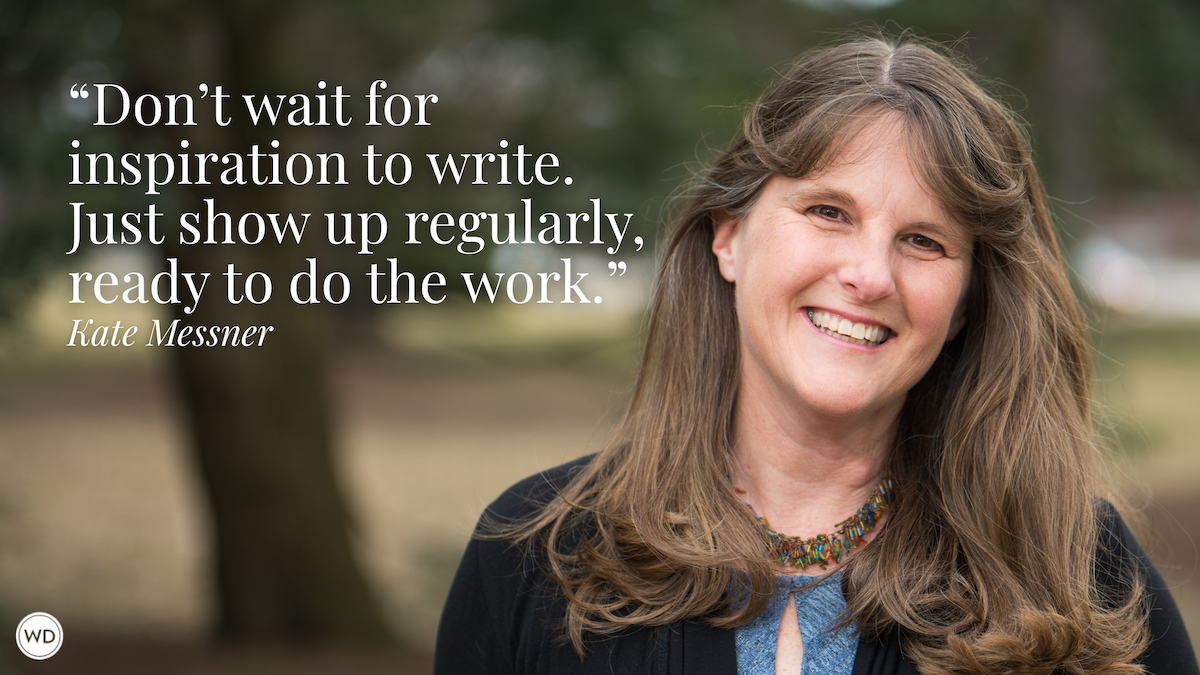How to Keep Writing When You’re Stuck and Your Usual Process Is Failing You
Author Nicole S. Palmer shares seven ways for writers to keep writing even when they’re stuck with their usual writing processes.
As a writer you probably already have a process. Maybe you start with an outline, or maybe you let the words flow first and structure them later. Perhaps you need complete silence, or maybe your best ideas come in the middle of a bustling coffee shop. Whatever your process looks like, it works, until it doesn’t.
Writing is an evolving practice, so creative roadblocks are inevitable. But when the strategies you’ve relied on suddenly stop producing results, frustration sets in and doubt can quickly follow close behind. So how do you keep writing when you’re stuck and your usual approach isn’t working?
Instead of forcing yourself to stick to a failing method, try adapting your process. Here are seven ways to push through when your process isn’t cooperating.
1. Acknowledge the block, but don’t let it stop you
When the words stop flowing the way they usually do, your first instinct may be to panic. But, recognizing that every writer experiences dry spells can help you take an objective approach. Your creativity isn’t gone, it’s just shifting. So instead of fighting the block, acknowledge it.
Start by identifying what is making writing difficult. Is it mental exhaustion, external stress, or simply a lack of inspiration? Understanding the root cause can help you approach the problem with clarity rather than frustration. Remind yourself that blocks are temporary and do not define your ability as a writer. Sometimes, simply admitting that you’re struggling can take the pressure off and make it easier to ease back into writing.
Journaling about what’s causing the block or talking to a fellow writer can help you process your thoughts and emotions. If frustration is clouding your motivation, try shifting your focus to something unrelated, reading, exercising, or even engaging in a completely different creative activity. The goal is not to force the words to come but to create the conditions where they can return naturally.
2. Change your writing environment
A fresh setting can shake up your creativity. If you always write at a desk, try a different location. A park, the library, or even a new corner of your home can shift your mindset. Some writers thrive with background noise, while others need silence. Experiment to see what helps reset your focus.
If changing locations isn’t an option, adjust your current space. Rearrange your workspace or change the lighting to create a new atmosphere. Even small adjustments like adding a plant, lighting a candle, or playing ambient sounds, can make your environment feel refreshed and more conducive to creativity.
3. Adjust your writing goals
If your usual word count feels impossible, reduce it. Instead of aiming for 1,000 words, try 200. Instead of writing a whole chapter, focus on one page. Progress is progress, no matter the scale.
Micro-goals keep you moving forward without overwhelming you. Set a timer for 10 minutes and free-write. Challenge yourself to describe a scene in five sentences. These small wins help rebuild momentum and remind you that you’re still a writer, even when productivity dips.
4. Change your writing tools
If typing is normally how you write, try switching to a different tool. Use a pen and paper for a tactile experience or try voice-to-text software to simply speak your ideas aloud. Just say whatever comes to mind and edit the text later. Treat it like a brain dump, without worrying about perfection.
Sometimes the physical act of writing can be the obstacle and changing how you get words down can open up new pathways for creativity.
5. Experiment with a different approach
Give yourself permission to break your own rules. If you normally plot everything in advance, try writing without a plan. If you’re a discovery writer, experiment with an outline. If your usual genre isn’t sparking inspiration, write a short story in a completely different style or from a different point of view.
Sometimes creativity needs novelty to reignite, so experiment with different approaches to see what makes the words flow. The results may surprise you.
6. Reduce input to increase output
Overconsumption of news, social media, and outside opinions can stifle creativity. While staying informed is important, constant information overload drains mental energy. So try limiting screen time before writing sessions.
Read fiction instead of headlines. Replace scrolling with activities that let your mind wander, like walking, listening to music, or simply sitting in silence. Creativity often emerges in the gaps between distractions.
7. Reframe writing as a practice, not a performance
Sometimes, the pressure to create something good is what’s blocking progress. If every word feels like it has to be brilliant, it becomes harder to write anything at all. But writing is not just about producing polished work, it’s about showing up.
So shift your mindset because the goal isn’t perfection, it’s persistence. Give yourself permission to write badly. Drafts are supposed to be messy. Each sentence, no matter how rough, is a step forward. The act of writing itself is the victory.
Keep showing up
Having seasons where your usual writing process stops working isn’t unusual. The key is to adapt rather than resist. Writing is an ongoing practice that requires flexibility and patience. Some days will feel effortless, while others will be a struggle. But words always return to those who keep showing up.
So shift your approach, adjust your expectations, and keep going. The work will come together, even if the path looks different than before.
Nicole S. Palmer is a best-selling author, founding partner of independent publishing company Delnic Media, and host of 5-star rated podcast Black Womaning in Corporate America™. When she isn’t writing, she’s speaking, and she’s usually talking about race, identity, and equity.








